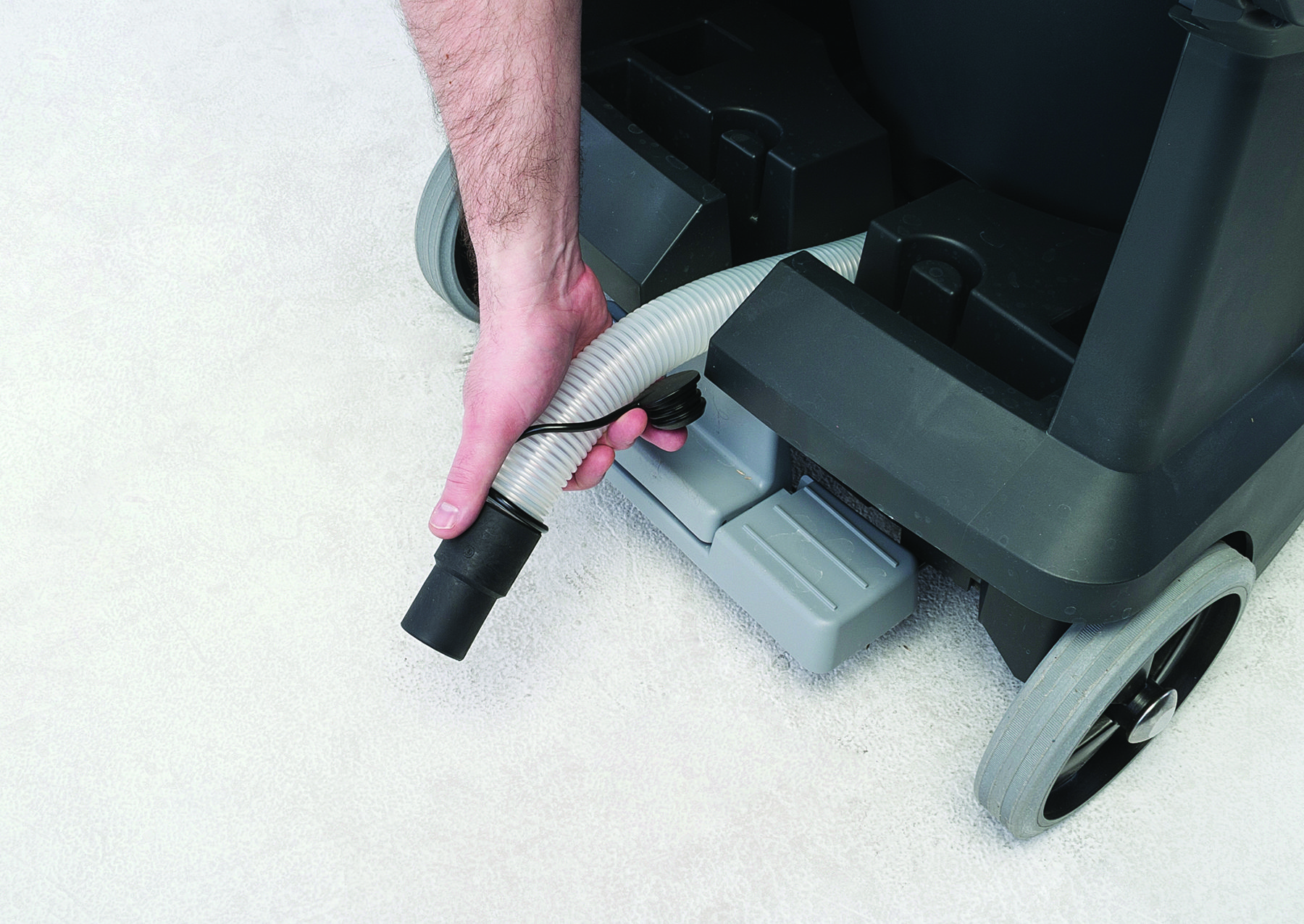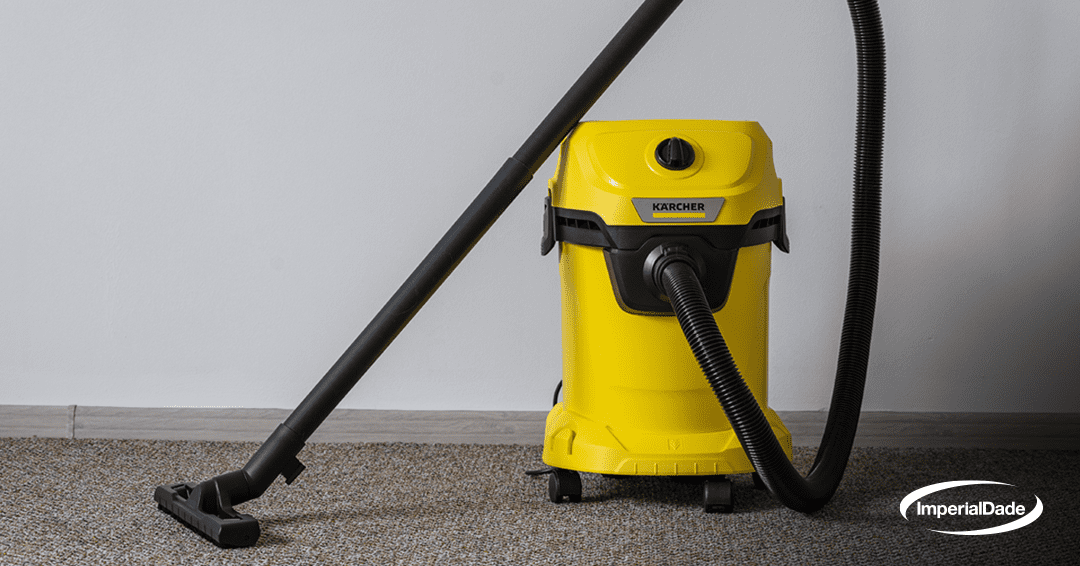Are you currently navigating the market for a commercial wet/dry vac? Are you feeling a bit overwhelmed by the number of options available?
Selecting the perfect equipment goes beyond just cost. It’s about finding one that enables you and your cleaning team to tackle tasks efficiently and effectively while addressing your facility’s equipment needs.
Every commercial wet/dry vac is designed to perform a specific task, so it is equipped with different features and capabilities.
Seven key factors affect the cost of a wet/dry vac and the cleaning tasks it can effectively perform, and each one needs to be considered.
How Much Does a Wet Dry Vac Cost?
Wet/dry vacs cost anywhere from $500 to $2,500 depending on these seven key factors:
- Tank Size
- Tank Material
- Tools and Accessories
- Squeegee Type
- Tip and Pour vs. Drain Port
- Single vs. Dual Motor
- Pneumatic vs. Electric-Powered
1. Tank Size
Let’s start with tank size, one of the most important features.
A bigger tank equates to a higher liquid and dry debris capacity. That means cleaning crews can clean up more debris or for longer before having to stop and empty the tank. The end result is increased productivity and cleaning capacity.
However, larger tanks also increase the unit’s price. This is due to the need for more materials in manufacturing and a more robust casing to support it.
Consider the workflow demands of your cleaning operations and choose a tank size that meets your specific needs.
2. Tank Material
The material of the tank is another critical factor to consider.
Metal tanks present a higher upfront cost at face value than the poly alternative. However, a metal tank is an investment in the long run. Metal tanks are more robust, making it a sensible choice for those looking at the longevity of their equipment and the potential cost savings over time.
Poly tanks, on the other hand, are typically more affordable than metal tanks. However, they’re less robust, don’t last as long, and can be prone to absorbing odors from liquid debris when compared to metal tanks.
Consider the type of debris you’ll be working with and how long you expect the equipment to last, and choose a model that fits those needs.
3. Tools and Accessories
Now, let’s explore the realm of tools and accessories.
There is a long list of tools and accessories that can enhance the functionality of a wet/dry vac, such as crevice tools, stainless steel wands, different specialty filters, and more.

Tools and accessories are all about the added value they bring to a wet/dry vac.
More tools and accessories mean a more diversified range of cleaning tasks that the piece of equipment can complete. It makes sense then that the more tools and accessories it comes with or is enabled to use, the higher the cost of a wet/dry vac will be. Models with advanced design features to accommodate various tools and accessories naturally come at a higher price point.
Consider the cleaning tasks involved in daily and periodic maintenance at your facility, and choose a model with the right tools and accessories for your specific needs.
4. Squeegee Type
Front-mounted squeegees, often an additional accessory to be purchased separately, are worth a closer look.

Squeegees often offer a wider cleaning path than the wand tool stocked with a wet/dry vac. A wider cleaning path often makes cleaning large areas easier, as it will ultimately take fewer passes.
While they streamline wet cleanup, opting for a model with this feature will increase the wet/dry vac cost. However, the enhanced performance and ease of use may justify the expense.
Consider the type of debris and the size of the area. You’ll likely use a commercial wet/dry vac to clean and go with what makes the most sense.
5. Tip and Pour vs. Drain Port
Regarding drainage systems, the choice between tip-and-pour or a drain port is not just about functionality but also about ease of use and maintenance.

Tip and Pour
Tip and pour wet/dry vacs offer more portability because they don’t rely on a fixed drain system to be emptied. On that same note, they can be used across various locations without needing a specific drain setup. Generally, they’re also simpler in design, making for easy use and maintenance.
That said, tipping the commercial wet/dry vac over can be physically demanding and messy. This can become quite problematic when paired with a smaller tank size, as frequent trips to empty the tank can hinder productivity and increase strain on the worker.

Drain Port
The best quality of a drain port is that emptying the tank is incredibly easy. The risk of spills and the effort required to empty are also reduced as the tank doesn’t need to be lifted or tilted. Another benefit is that you will typically find drain ports on larger tanks, allowing for extended use without frequent emptying.
There are some downsides to a drain port, though. Drain ports have the potential to become clogged, which can lead to maintenance issues.
While the type of drainage system doesn’t dramatically impact the overall cost of a wet/dry vac, it remains a significant feature to assess when making your purchase decision. Consider the practical aspects of each system and go with the one that would most benefit your cleaning operation.
6. Single vs. Dual Motor
The number of motors in a commercial wet/dry vac are pivotal in determining the unit’s overall cost and performance.
Single Motor
Single-motor commercial wet/dry vacs have only one motor powering both the suction power and cleaning performance. These models will cost less and are generally easier to maintain because there are fewer parts involved.
The tradeoff is that the motor’s power and performance are split between two functions rather than delivering the full potential of its power to a single function.
Dual Motor
Dual motor wet/dry vacs have two motors for more suction power and performance. Naturally, models with two motors will cost more and may involve additional maintenance costs over time.
The benefit of a dual-motor model is that it has improved suction and increased cleaning performance compared to single-motor models.
Consider whether the superior power and performance justify the increased cost of a wet/dry vac and go with what best fits your budget and cleaning needs.
7. Pneumatic vs. Electric Powered
Whether pneumatic or electric-powered, it plays a critical role in the cost of a wet/dry vac.
Pneumatic Powered
Pneumatic-powered wet/dry vacs are industrial and far more powerful than their electric counterparts. These models are more durable and less prone to breakdowns because they have fewer moving parts.

A major drawback of pneumatic-powered wet/dry vacs is that they require a compressed air source. This can limit their use when compressed air sources aren’t readily available.
Electric Powered
On the other hand, electric-powered wet/dry vacs can be used in various environments, as electrical outlets are far more available than air compressors. This makes electric models more portable and flexible regarding where they can be used.
That being said, the portability of an electric-powered wet/dry vac is limited by the length of the power cord. Lastly, these models may require more maintenance due to the complexity of the motor and associated components. If not properly maintained, they can pose a risk of electric shock when used in a wet or hazardous environment.
Consider the specific demands of your cleaning tasks, the availability of a power source, and the long-term cost implications of each power option before choosing the option that best suits your facility and budget.
Final Thoughts
Understanding that the cost of a wet/dry vac is a dynamic variable influenced by several factors, like tank type, tank material, tools and accessories, squeegee type, drainage system, single or dual motor, and power source, is key to making the right purchase.
More features and increased power come with a higher price tag. So, when investing in a new wet/dry vac, align your choice with your specific needs, operational demands, and budget constraints.
If you are uncertain about your cleaning requirements and budgetary needs, consider contacting an Imperial Dade facility near you.
Our janitorial equipment experts await your call, ready to provide a complimentary and detailed evaluation of your facility and its equipment needs.
Call us today, and rest assured that we’ll take care of every aspect of your wet/dry vac selection process, providing tailored advice to ensure you make an informed decision that aligns with your business needs!
